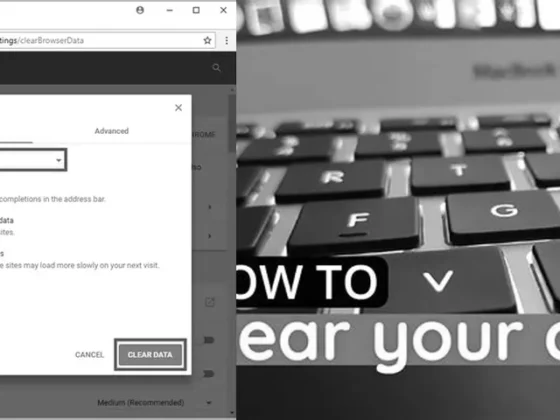How Do You Screencast On A Chromebook: Are you ready to take your screen recording skills to the next level? Screencasting on a Chromebook is easier than you might think, and in this blog post, we’ll show you exactly how to do it. Whether you’re a teacher wanting to create captivating instructional videos or a tech-savvy individual looking to share your expertise, we’ve got you covered. Get ready to unleash your creativity and become a screencasting pro with our step-by-step guide and expert tips. So grab your Chromebook and let’s dive into the world of screencasting!
Getting Started with Screencasting on Your Chromebook
As remote work and digital education become increasingly prevalent, the ability to share information effectively is more crucial than ever. A Chromebook, with its versatile and user-friendly interface, offers a straightforward solution for screencasting—capturing what’s on your screen in video form. Here’s how you can start creating screencasts on your Chromebook.
Understanding the Shortcut for Screencasting
The quickest way to start a screencast on a Chromebook is by using the keyboard shortcut: Ctrl + Shift + Show all windows. This command is the gateway to accessing the screen recording features of your Chromebook, allowing you to capture your screen activity with ease.
Step-by-Step Guide to Screen Recording on a Chromebook
Screen recording on a Chromebook is a simple process that can be broken down into a few easy steps. Here’s how you can do it:
1. Initiate Screen Recording
Press the Ctrl + Shift + Show all windows keys simultaneously. This will bring up the control panel for screen recording on your Chromebook.
2. Launch the New Screen Recording
Once the control panel appears, click on the “New screen recording” button. This will give you the option to select the type of screen capture you want to perform.
3. Choose Your Recording Area
You will then be prompted to select whether to record the entire screen, a specific window, or a particular portion of your screen. Make your choice based on the content you wish to capture.
Creating a Screencast That Captivates
Creating a screencast is more than just recording your screen. It’s about engaging your audience and providing value through your content. Follow these steps to create a screencast that stands out.
1. Select the Right Tool
While your Chromebook comes with built-in screen recording functionality, choosing the right tool for your needs is essential. Evaluate various screen recording tools to find one that offers the features you need.
2. Prepare Your Screen and Yourself
Before you hit the record button, ensure that your screen is organized and free from any distractions. If you’re going to be on camera, make sure you’re prepared and presentable.
3. Conduct a Test Recording
Always perform a test recording to check audio and video quality. This step helps you identify and rectify any issues before you proceed with the final recording.
4. Edit Your Screencast
After recording, take the time to edit your screencast. Trimming unnecessary parts, adding annotations, or including transitions can significantly enhance the final product.
5. Share Your Masterpiece
Once your screencast is polished and ready, share it with your intended audience. Whether it’s for educational purposes, a work presentation, or a tutorial, ensure it’s accessible to your viewers.
Expanding Your Screencasting Capabilities
Beyond the basics of screencasting, you may want to share your content on a larger screen or with a broader audience. Here’s how you can mirror your Chromebook to a TV wirelessly without using Chromecast.
Wirelessly Mirroring Your Chromebook to a TV
- Ensure that your Chromebook and TV are on the same Wi-Fi network.
- Open the Chrome browser on your Chromebook.
- Click on the three-dot menu in the top-right corner and select “Cast” from the drop-down menu.
- Follow the on-screen instructions to connect your Chromebook’s display to your TV wirelessly.
Understanding Chromebook Keyboard Shortcuts
Chromebooks come with an array of keyboard shortcuts designed to enhance productivity and accessibility. One such shortcut is Ctrl + Alt + Z, which enables or disables ChromeVox, the built-in screen reader for visually impaired users.
Exploring Other Chromebook Shortcuts
Beyond screencasting and accessibility features, Chromebooks offer a wealth of shortcuts that can help you navigate and use your device more efficiently. Familiarizing yourself with these shortcuts can save you time and streamline your workflow.
Final Tips for Screencasting Success
Creating an effective screencast on a Chromebook requires more than just technical know-how; it requires a thoughtful approach to content creation and delivery. Keep your audience engaged by telling a story, maintaining a clear and succinct narrative, and providing actionable tips or answers throughout your screencast. Remember, authenticity and credibility are the cornerstones of a successful screencast, so ensure your content is both genuine and reliable.
With these steps and tips in mind, you’re now equipped to create screencasts on your Chromebook that are not only informative but also engaging and professionally crafted. Whether for education, work, or personal projects, your screencasts can now rise to new heights, capturing the attention and interest of your audience with ease.
FAQ & Related Questions about Screencasting on a Chromebook
Q: How do you screencast on a Chromebook?
A: To screencast on a Chromebook, you can follow these steps: 1) Choose the right screen recording tool, 2) Prepare your screen for recording, 3) Record your screen and audio, 4) Edit your recording, and 5) Share it with your audience.
Q: How do I screen mirror on my Chromebook?
A: To screen mirror on a Chromebook, you can use the Screencast app. If you don’t see the app in the launcher, make sure to upgrade your Chromebook’s operating system to Chrome version 103 or later.
Q: How does screencast work on TV?
A: To screencast on a TV, you can use a Chromecast device. Connect the Chromecast to your TV via HDMI, then on your Android phone, look for a Cast or Screen Cast button in the Quick Settings. Tap that button to start screencasting.
Q: Can I screencast to a regular TV?
A: Yes, you can screencast to a regular TV using a Chromecast device. Connect the Chromecast to your TV and use the Cast or Screen Cast button on your Android phone to initiate the screencasting.
Q: How do I cast from my Chromebook to my TV?
A: To cast from your Chromebook to your TV, follow these steps: 1) Open Chrome, 2) Click on the More menu at the top right, and 3) Select “Cast” and choose the device you want to cast to.


